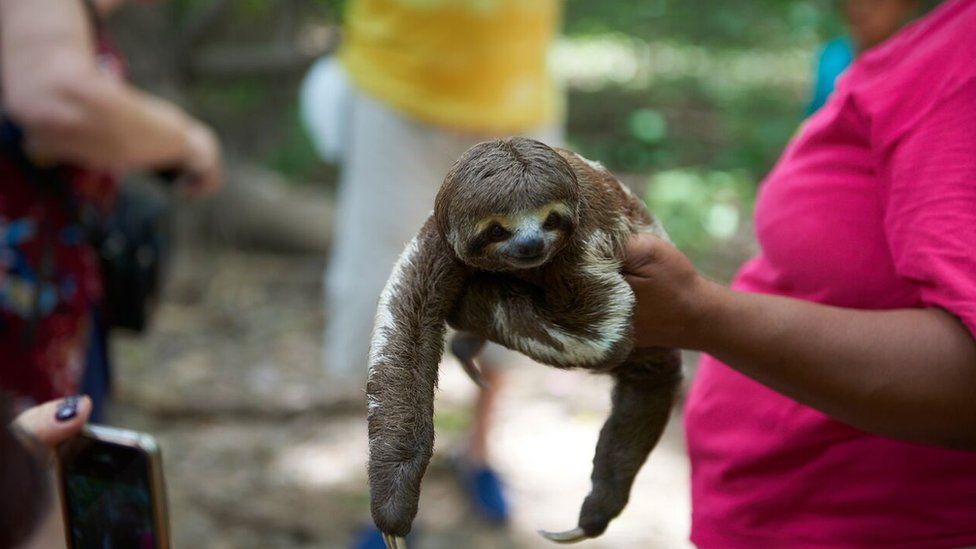Instagram urged to act on sloth selfies
- Published

The trend for tourists taking selfies with local creatures is fuelling a rise in animals being snatched from the wild by irresponsible tour operators, according to animal charity World Animal Protection.
The charity found a 292% increase in the number of wildlife selfies posted on Instagram since 2014.
It is asking the site to take action to "protect animals on their platform".
Instagram said it was working with experts to address the issue.
"We prohibit the use of Instagram to facilitate or organise criminal activity that causes physical harm to animals," the company said.
"We remove reported content that promotes poaching of endangered species or the sale of animals for organised fight, and that includes acts of animal abuse.
"We are in ongoing conversations with wildlife experts and are looking at ways to provide our community with information around activities that can be harmful to animals and nature, such as posting content that may depict exploitation of wildlife and bad welfare practices."
Dr Neil D'Cruze, from World Animal Protection, said: "It's extremely distressing to see animals being stolen from the wild and used as photo props for posting on social media.
"The reality is these unfortunate animals are suffering terribly, both in front of and behind the camera."
"The growing demand for harmful wildlife selfies is not only a serious animal welfare concern but also a conservation concern."
Over one quarter of the pictures analysed by the charity are judged to be "bad selfies" - people hugging, holding or otherwise interacting inappropriately with wildlife.
Investigators looking at the treatment of such animals in the Amazon cities of Manaus, in Brazil, and Puerto Alegria, in Peru, found evidence of:
- sloths captured and tied to trees
- birds such as toucans with severe abscesses on their feet
- green anacondas wounded and dehydrated
- caiman crocodiles restrained with rubber bands around their jaws
- a manatee held in a tank in the forecourt of a hotel